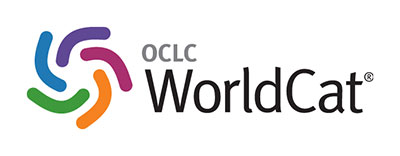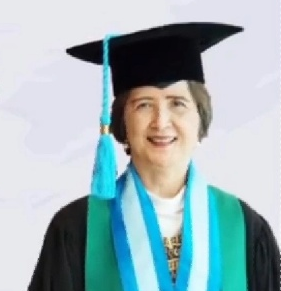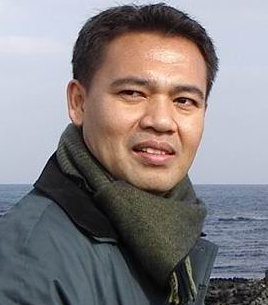Moist Sebagai Mediator pada Korelasi UV Damage terhadap Kadar Porfirin pada Siswa SMA Kalam Kudus II Jakarta
DOI:
https://doi.org/10.28932/jmh.v6i2.8671Keywords:
paparan UV, moist, Porfirin, UV damage, radiasiAbstract
Radiasi ultraviolet (UV) memiliki sifat sebagai inisiator dan promoter tumor. UV adalah faktor risiko yang dapat dimodifikasi untuk kanker kulit dan gangguan kulit lainnya. Paparan UV yang berlebihan menyebabkan kerusakan secara fisik pada lapisan kulit dan secara kimia pada stres oksidatif. Paparan UV-A, menginduksi fotooksidatif stres, ditandai dengan meningkatkan kadar Porfirin terutama protoporfirin IX. Kandungan sebum, hidrasi yang rendah dan jumlah Porfirin yang rendah, menyebabkan meningkatnya sensitivitas kulit. Tujuan dari penelitian cross sectional ini adalah menguji korelasi antara moist sebagai mediator pada korelasi UV damage terhadap kadar Porfirin. Penelitian dilakukan di Sekolah Menengah Atas Kalam Kudus II Jakarta dengan total 91 responden. Kadar Porfirin dan moist dinilai dengan skin analyzer pada regio T-zone dan V-zone. Uji korelasi dengan Pearson Correlation. Nilai R2 untuk variabel Porfirin, moist, dan UV damage adalah sebesar 0,655, 0,729, dan 0,143, secara berurutan. Variabel moist memiliki kemampuan prediksi relevansi yang kecil dengan nilai Q2 0,233 dan UV damage didapatkan memiliki kemampuan prediksi yang besar, yaitu 0,604. Dapat disimpulkan, adanya peningkatan kadar Porfirin terhadap pajanan UV, namun pada kulit dengan kadar kelembaban yang rendah akibat pajanan UV, mengalami peningkatan kadar Porfirin yang lebih bermakna.Downloads
References
D Orazio J, Jarrett S, Amaro-Ortiz A, Scott T. UV Radiation and the Skin. Int J Mol Sci. 2013;14(6):12222–48.
Gromkowska-Kepka KJ, Puscion-Jakubik A, Markiewicz-Zukowska R, Socha K. The impact of ultraviolet radiation on skin photoaging - review of in vitro studies. J Cosmet Dermatol. 2021;20(11):3427–31.
Shu M, Kuo S, Wang Y, Jiang Y, Liu YT, Gallo RL. Porphyrin Metabolisms in Human Skin Commensal Propionibacterium acnes Bacteria: Potential Application to Monitor Human Radiation Risk. Curr Med Chem. 2013;20(4):562–8.
Barnard E, Johnson T, Ngo T, Arora U, Leuterio G, McDowell A. Porphyrin Production and Regulation in Cutaneous Propionibacteria. D Orazio SEF, editor. mSphere. 2020;5(1):079319
Fendy Wellen, Tan ST, Yohanes Firmansyah, Hendsun Hendsun. Correlation between Facial Skin Damage Due to UV Exposure and Facial Skin Porphyrin Level: Study on Students of SMA Kalam Kudus II Jakarta, Indonesia. Biosci Med J Biomed Transl Res. 2023;6(18):2948–52.
Wang Y, Zhu W, Shu M, Jiang Y, Gallo RL, Liu YT. The Response of Human Skin Commensal Bacteria as a Reflection of UV Radiation: UV-B Decreases Porphyrin Production. Hamblin M, editor. PLoS One. 2012;7(10):e47798.
Patwardhan S V., Richter C, Vogt A, Blume-Peytavi U, Canfield D, Kottner J. Measuring acne using Coproporphyrin III, Protoporphyrin IX, and lesion-specific inflammation: an exploratory study. Arch Dermatol Res. 2017;309(3):159–67.
Patra V, Byrne SN, Wolf P. The Skin Microbiome: Is It Affected by UV-induced Immune Suppression? Front Microbiol. 2016 ;7:01235
Bernerd F, Passeron T, Castiel I, Marionnet C. The Damaging Effects of Long UVA (UVA1) Rays: A Major Challenge to Preserve Skin Health and Integrity. Int J Mol Sci. 2022;23(15):8243.
Buchczyk DP, Klotz LO, Lang K, Fritsch C, Sies H. High efficiency of 5-aminolevulinate-photodynamic treatment using UVA irradiation. Carcinogenesis. 2001;22(6):879–83.
du Plessis J, Stefaniak A, Eloff F, John S, Agner T, Chou TC. International guidelines for the in vivo assessment of skin properties in non-clinical settings: Part 2. transepidermal water loss and skin hydration. Skin Res Technol. 2013;19(3):265–78.
Thieden E, Philipsen PA, Sandby-Moller J, Heydenreich J, Wulf HC. The proportion of lifetime UV dose received by children, teenagers, and adults based on Time-Stamped Personal Dosimetry. J Invest Dermatol. 2004;123(6):1147–50.
Green AC, Wallingford SC, McBride P. Childhood exposure to ultraviolet radiation and harmful skin effects: Epidemiological evidence. Prog Biophys Mol Biol. 2011;107(3):349-55.
Lee CH, Wu SB, Hong CH, Yu HS, Wei YH. Molecular Mechanisms of UV-Induced Apoptosis and Its Effects on Skin Residential Cells: The Implication in UV-Based Phototherapy. Int J Mol Sci. 2013;14(3):6414-35.
Rosso J Del, Zeichner J, Alexis A, Cohen D, Berson D. Understanding the Epidermal Barrier in Healthy and Compromised Skin: Clinically Relevant Information for the Dermatology Practitioner: Expert Panel Roundtable Meeting Proceedings. J Clin Aesthet Dermatol. 2016;9(4 Suppl 1):S2–8.
Biniek K, Levi K, Dauskardt RH. Solar UV radiation reduces the barrier function of human skin. Proc Natl Acad Sci. 2012;109(42):17111-6.
Boireau-Adamezyk E, Baillet-Guffroy A, Stamatas GN. The stratum corneum water content and natural moisturization factor composition evolve with age and depend on the body site. Int J Dermatol. 2021 Jul 10;60(7):834–9.
Osseiran S, Cruz J Dela, Jeong S, Wang H, Fthenakis C, Evans CL. Characterizing stratum corneum structure, barrier function, and chemical content of human skin with coherent Raman scattering imaging. Biomed Opt Express. 2018;9(12):6425.
Lim SH, Kim SM, Lee YW, Ahn KJ, Choe YB. Change of biophysical properties of the skin caused by ultraviolet radiation-induced photodamage in Koreans. Ski Res Technol. 2008;14(1):93–102.
Jansen van Rensburg S, Franken A, Du Plessis JL. Measurement of transepidermal water loss, stratum corneum hydration and skin surface pH in occupational settings: A review. Ski Res Technol. 2019;25(5):595–605.
Kim MA, Jung YC, Suh B, Lee HN, Kim E. Skin biophysical properties including impaired skin barrier function determine ultraviolet sensitivity. J Cosmet Dermatol. 2022;21(10):5066–72.
Zhou L, Liu X, Li X, He X, Xiong X, Lai J. Epidermal Barrier Integrity is Associated with Both Skin Microbiome Diversity and Composition in Patients with Acne Vulgaris. Clin Cosmet Investig Dermatol. 2022; 15:2065–75.
Downloads
Published
How to Cite
Issue
Section
License
Copyright (c) 2024 Gilda Gilda, Elizabeth Novia, Hendsun Hendsun, Fendy Wellen, Yohanes Firmansyah, Sukmawati T Tan

This work is licensed under a Creative Commons Attribution-NonCommercial 4.0 International License.
Authors who publish with this journal agree to the following terms:
- Authors retain the copyright and grant the journal right of first publication with the work
simultaneously licensed under a Creative Commons Attribution-NonCommercial 4.0 International License that allows others to share the work with an acknowledgement of the work's authorship and initial publication in this journal. - Authors are able to enter into separate, additional contractual arrangements for the nonexclusive distribution of the journal's published version of the work (e.g., post it to an institutional repository or publish it in a book), with an acknowledgement of its initial publication in this journal.
 This work is licensed under a Creative Commons Attribution-NonCommercial 4.0 International License.
This work is licensed under a Creative Commons Attribution-NonCommercial 4.0 International License.

















